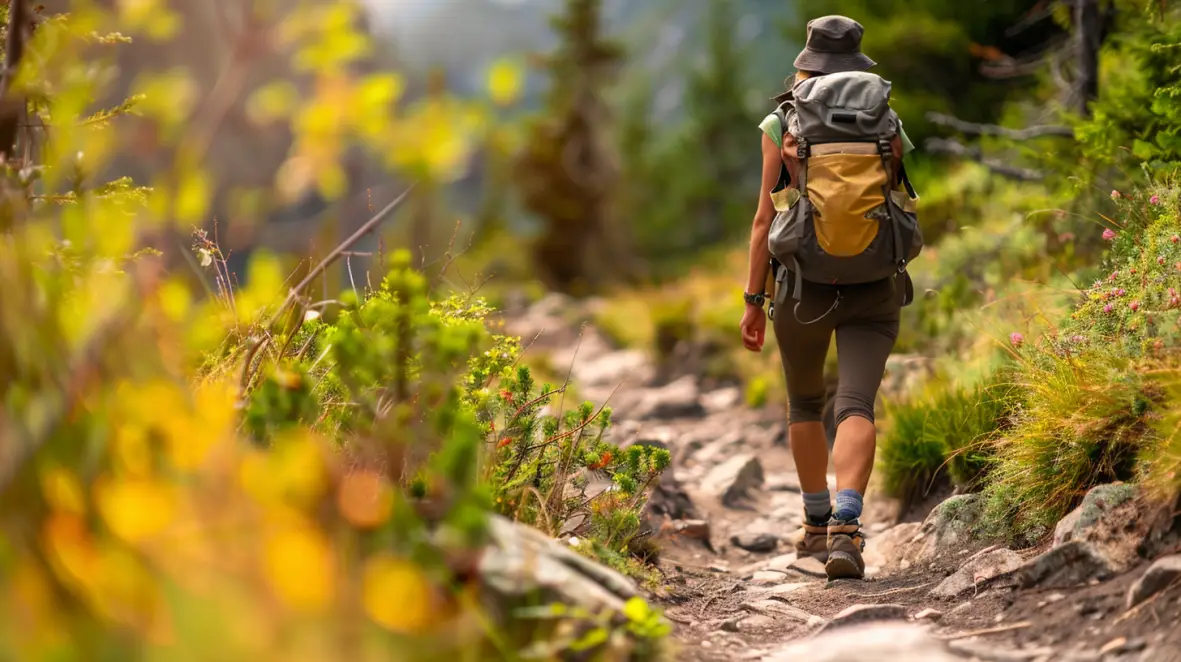
Hiking is a perfect way to reconnect with nature, get some exercise, and refresh your mind. Whether you’re a seasoned hiker or new to the trail, preparing for a day hike can make all the difference in your experience. Here are six tips to ensure you have an enjoyable and safe adventure on your next day hike.
1. Choose the Right Trail for Your Skill Level
The first step to a successful day hike is choosing a trail that matches your fitness and experience level. Trail difficulty varies, from flat, easy walks to steep, challenging climbs. Beginners should start with shorter, well-marked paths that have moderate elevation gain. Research your trail beforehand—look at maps, read reviews, and check the trail’s distance, elevation, and terrain. Apps like AllTrails or websites like Hiking Project can help you find the perfect hike suited to your ability.
Bonus Tip: Make sure to check for recent trail conditions, especially after heavy rainfall, as some paths may become hazardous or impassable.
2. Dress in Layers and Wear Proper Footwear
Weather conditions can change rapidly, especially if you’re hiking in higher altitudes or remote areas. Dress in layers so you can adjust to the changing temperatures as you hike. Start with a moisture-wicking base layer to keep sweat away from your skin, then add an insulating layer (like fleece) to keep warm, and finish with a waterproof, wind-resistant outer shell to protect from the elements.
Equally important is footwear. A pair of comfortable, broken-in hiking boots or trail shoes with good traction will help prevent blisters and provide support on uneven terrain. Avoid cotton socks, which trap moisture, and instead opt for wool or synthetic blends that keep your feet dry.
3. Pack the Essentials for Safety and Comfort
Even on a short day hike, packing the right essentials can make your trip safer and more enjoyable. Here’s a basic list of what you should carry:
- Water: Hydration is crucial. Bring at least 2 liters for a moderate hike. Consider carrying a water filter or purification tablets if you’re unsure about water sources along the trail.
- Food and snacks: Pack high-energy snacks like trail mix, energy bars, or fruit to keep your energy levels up.
- Navigation: Always carry a physical map and compass, even if you’re using a GPS device or smartphone app, as battery life can fail.
- First-aid kit: A small first-aid kit with bandages, antiseptic wipes, and pain relievers is essential.
- Sun protection: Bring sunglasses, sunscreen, and a hat to protect yourself from UV rays.
- Emergency shelter and tools: In case you need to stop or an emergency arises, pack a lightweight emergency blanket and multi-tool.
4. Stay Hydrated and Fueled
Staying hydrated is key to avoiding dehydration, especially if you’re hiking in warm weather or at higher elevations. Drink small amounts of water frequently throughout the hike. Don’t wait until you’re thirsty to drink—by then, you’re already dehydrated.
It’s equally important to keep your body fueled. Eat snacks or small meals every couple of hours to keep your energy up. High-protein snacks like nuts, cheese, or jerky, combined with carbohydrates like energy bars or fruit, work well for a day hike.
5. Practice Leave No Trace
Respecting the environment is essential to preserving hiking trails for future generations. Follow the principles of Leave No Trace to minimize your impact:
- Pack out what you pack in: Never leave trash behind. Take everything with you, including food wrappers and biodegradable waste.
- Stay on the trail: Wandering off the designated path can damage fragile ecosystems and cause erosion.
- Respect wildlife: Observe animals from a distance and avoid feeding them. Human food is harmful to wildlife.
- Leave nature as you find it: Don’t pick flowers or disturb natural features.
By adhering to these guidelines, you ensure that the beauty and tranquility of hiking trails are preserved for everyone to enjoy.
6. Know Your Limits and Pace Yourself
Pushing yourself too hard can turn a fun day hike into a miserable experience. Listen to your body and take breaks when needed. If you’re hiking with others, agree on a pace that suits the entire group. Remember, hiking is about enjoying the journey, not racing to the finish line.
If you’re feeling fatigued, take shorter, more frequent breaks. Keep an eye on the time and pace yourself, especially if you need to return before sunset. Plan to finish your hike with enough daylight left to get back to your starting point safely.






